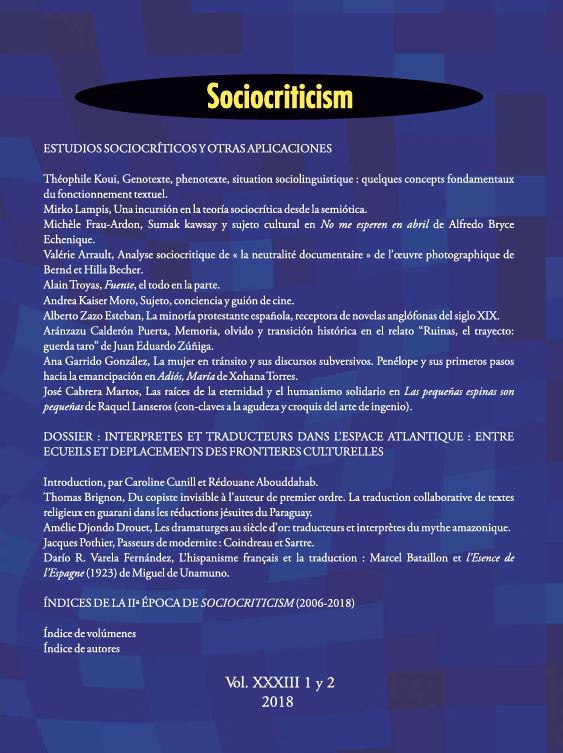From Invisible Scribe to First-Class Author. Collaborative Translation of Religious Texts Into Guarani in the Jesuit Reductions Of Paraguay
Keywords:
Collaborative translation, Jesuit missions, Paraguay, Guarani language, José Serrano, Nicolás YapuguayAbstract
On the basis of the translation into guarani of the ascetical treatise De la diferencia entre lo temporal y eterno written by Juan Eusebio Nieremberg in 1640 and then printed in the mission of Loreto (Paraguay) in 1705, this article highlights the power struggles linked with collaborative translation practices in a missionary context. The reconstitution of the book’s editorial background challenges its attribution to an alleged single translator, Jesuit missionary José Serrano, and underlines the presumable implication of an Indian backup team, although such collaborators are still considered to be mere scribes. Following recent historiographical proposals, the study of the social and linguistic motives of this invisibility, combined with the identification of various Guarani co-translators (such as cacique Nicolás Yapu uay), leads us to analyze such blindness from an epistemological point of view.












